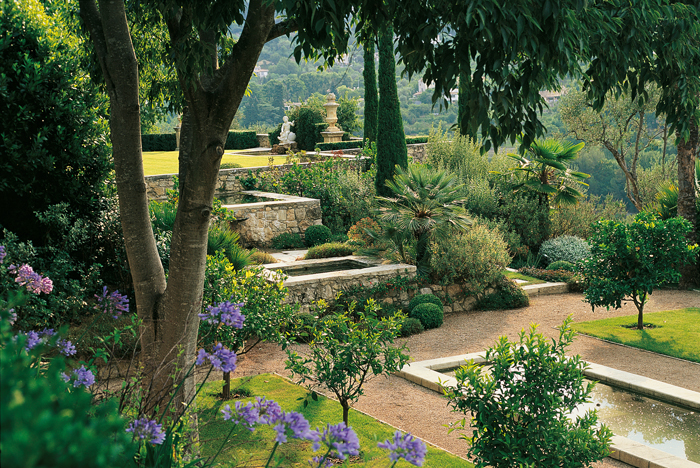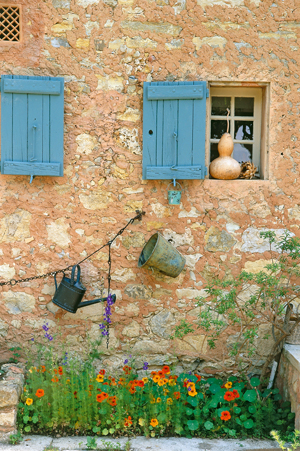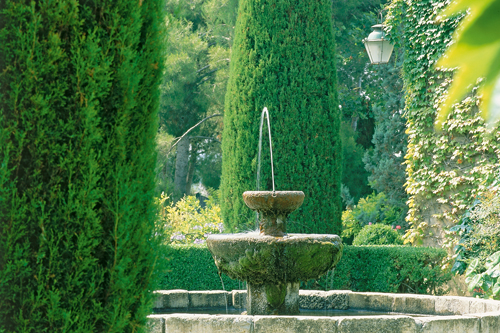Private Gardens of the Mediterranean
 If, like me, you are a devotee of Mediterranean gardens, you will be delighted to learn that ‘Private Gardens of the Mediterranean’ – Garden Design by Jean Mus – has been printed as a second edition, just over a decade since the original.
If, like me, you are a devotee of Mediterranean gardens, you will be delighted to learn that ‘Private Gardens of the Mediterranean’ – Garden Design by Jean Mus – has been printed as a second edition, just over a decade since the original.
With text by Dane McDowell and superb photography by the late Vincent Motte, this second edition offers rare access into the most beautiful and unique gardens in the Mediterranean designed by renowned landscape architect Jean Mus.
 From lush coastal estates or peaceful countryside havens to green oases amid the hustle and bustle of the city, Mus’s lavish gardens – whether perched above the sea or nestling in the heart of a town – are always perfectly integrated into the surrounding environment and incorporate a rich spectrum of Mediterranean influences, including pottery, slate walkways, sleek water channels and regional flora.
From lush coastal estates or peaceful countryside havens to green oases amid the hustle and bustle of the city, Mus’s lavish gardens – whether perched above the sea or nestling in the heart of a town – are always perfectly integrated into the surrounding environment and incorporate a rich spectrum of Mediterranean influences, including pottery, slate walkways, sleek water channels and regional flora.
For three decades, Mus has been creating parks and gardens along Mediterranean shores and throughout the world. Within the pages of this new volume we are able to appreciate his skill in depth as we are taken on an exclusive tour of some of the most spectacular private gardens he has created. From the South of France into Greece and Portugal we are able to enjoy from our armchair his distinctive designs, with the added bonus of sharing his technical and reflective anecdotes, peppered throughout the text, which in themselves are like a mini masterclass.
 The beauty of a book dedicated to just one designer is the opportunity for the reader to really understand the designer’s thoughts through a variety of gardens. In this case, chapters are divided into five distinct sections: Gardens by the Sea, Country House Gardens, Gardens under the Influence, Intimate Gardens and Gardens of the Senses. Within each section we find a variety of gardens, perfectly illustrated by the late Vincente Motte with excellent descriptions and history by the author Dane McDowell. (pictured right: above a carpet of nasturtiums, old gardening tools are displayed like a work of art.)
The beauty of a book dedicated to just one designer is the opportunity for the reader to really understand the designer’s thoughts through a variety of gardens. In this case, chapters are divided into five distinct sections: Gardens by the Sea, Country House Gardens, Gardens under the Influence, Intimate Gardens and Gardens of the Senses. Within each section we find a variety of gardens, perfectly illustrated by the late Vincente Motte with excellent descriptions and history by the author Dane McDowell. (pictured right: above a carpet of nasturtiums, old gardening tools are displayed like a work of art.)
The Villa Florentina for example, described as a place of myth and magic belonging to the legendary past of the Cote d’Azur, where Mus comments that: “I came to understand that beauty is to be found not in opulence but in sensibility.” McDowell’s text and descriptive flair bring the various gardens right into your armchair as in The Perfumer’s Garden, in the hills of Cabris, perched in a dominant position above the bay of Cannes, where Mus uses dry-stone terraces to descend gently towards the valley. One can almost smell the rosemary, thyme and santolina of this garden.
Mus comments that “the garden is the most beautiful kind of entertainment” and McDowell, aided by the superb photography in the book, certainly exploits that fact within the pages of this enjoyable book. Through its pages one takes a real pleasure in the mastery of the work of Jean Mus as he creates his extraordinary gardens whose spirit reflects his love for the land that formed him.
The moss covered fountain, harks back to the ‘art de vivre’ of the Age of Enlightenment.
Dane McDowell, former editor in chief of Résidence Décoration, has regularly contributed to Figaro Magazine and Connaissance des Arts. She has published several books including Living in Provence.
The late Vincent Motte was a photographer who lived in Provence for 20 years. His photographs have appeared in many books including Gardens o Provence and Gardens of the French Riviera.
‘Private Gardens of the Mediterranean’ – Garden Design by Jean Mus – with text by Dane McDowell and photography by Vincent Motte is published by Flammarion, in hardback at £19.95.
Picture credit: All photographs are ©Vincent Motte, from The Private Gardens of the Mediterranean, Flammarion 2016.
Banner: Under the protection of a Mediterranean Hackberry tree (Celtis Australis) ponds of different heights flow into the main canal which surrounds a collection of citrus trees.


